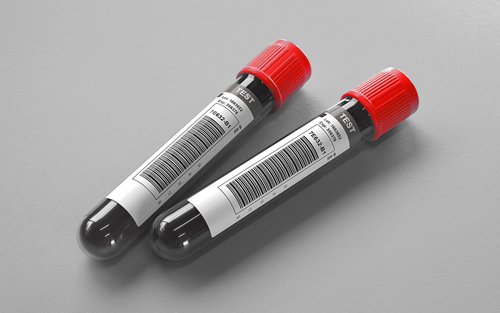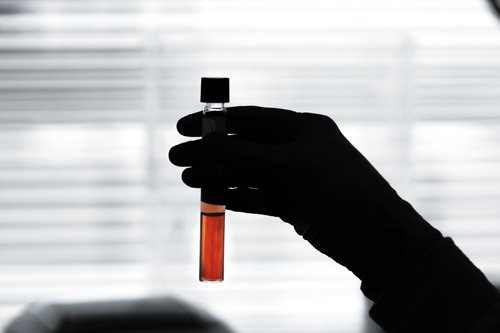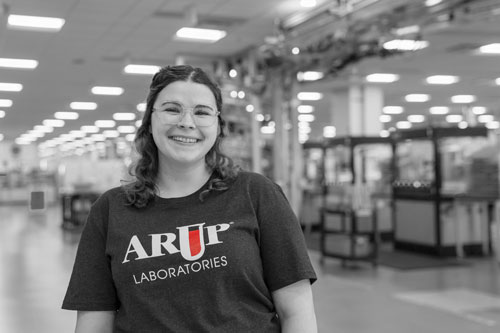Human Papillomavirus (HPV) Testing Highlights
Human papillomavirus (HPV) is the most common sexually transmitted viral infection in the United States.
Most HPV infections are benign and resolve on their own, but persistent infection with any of the high-risk HPV genotypes increases a woman’s risk for developing cervical cancer.
To assist in the detection and surveillance of HPV infections, ARUP offers multiple molecular screening and testing options based on current cervical cancer screening guidelines from the American College of Obstetricians and Gynecologists (ACOG), the American Society for Colposcopy and Cervical Pathology (ASCCP), the United States Preventive Services Task Force (USPSTF), and the American Cancer Society (ACS).
Why Choose ARUP?
Flexible Testing Options
Clinicians have the ability to order the testing indicated for individual patient populations.
Cost Saving Opportunities
ARUP offers multiple HPV testing options at various price points.
Reliable Results
ARUP’s screening tests detect 14 high-risk HPV genotypes in a single analysis, differentiates HPV16 and HPV18 from other high-risk types, and aligns reporting with current cervical cancer screening guidelines.
Additional Resources
- For more information on testing options, visit the ARUP Human Papillomavirus Consult topic.
- Visit ARUP’s test directory for additional HPV offerings.
Education

An Update on HPV Versus Non-HPV-Associated Endocervical Adenocarcinoma
Video Lecture by Lesley C. Lomo, MD
Pathologist
Molecular HPV Testing Options
| Test Name | Test Number | Test Utility | Result Type | HPV Genotype Targets |
|---|---|---|---|---|
| Human Papillomavirus (HPV) High Risk Screen, by Transcription-Mediated Amplification (TMA), ThinPrep | 3016943 | Preferred screening method for HPV | Detected/Not Detected Genotypes not differentiated | 16, 18, 31, 33, 35, 39, 45, 51, 52, 56, 58, 59, 66, 68
|
| Human Papillomavirus (HPV) High Risk Screen by Transcription-Mediated Amplification (TMA), with Reflex to Genotypes 16 and 18/45, ThinPrep | 3016945 | Detects HPV with reflex to additional genotype differentiation
| Detected/Not Detected If detected, high-risk genotypes HPV 16 and HPV 18/45 will be reported | |
| Human Papillomavirus (HPV) Genotypes 16 and 18/45, by Transcription-Mediated Amplification (TMA), ThinPrep | 3016944 | High-risk genotype differentiation
| HPV genotype 16: Detected/Not Detected HPV genotype 18/45: Detected/Not Detected | 16, 18/45 |
| HPV Primary Screen by PCR with Reflex to Cytology | 3016636 | Detects HPV with additional genotype 16 & 18 differentiation and reflex to cytology | HPV genotype 16: Detected/Not Detected HPV genotype 18: Detected/Not Detected HPV high risk target genotypes 31, 33, 35, 39, 45, 51, 52, 56, 58, 59, 66, 68): Detected/Not Detected Cytology by report | 16, 18, 31, 33, 35, 39, 45, 51, 52, 56, 58, 59, 66, 68
|
| Human Papillomavirus (HPV), High Risk with 16 and 18 Genotype by PCR, ThinPrep | 2011940 | Detects HPV 16, HPV18 and HPV High-risk. Vaginal Self-Collection Kit (ARUP supply # 64594) is acceptable for this test. | HPV genotype 16: Detected/Not Detected HPV genotype 18: Detected/Not Detected HPV high risk target genotypes (31, 33, 35, 39, 45, 51, 52, 56, 58, 59, 66, 68): Detected/Not Detected | |
| Human Papillomavirus (HPV), High Risk with 16 and 18 Genotype by PCR, SurePath | 2011933 | Detects HPV 16, HPV18 and HPV High-risk. |
Vaginal Self-Collected Specimens
Self-collected vaginal specimens for select HPV testing are now accepted.
Vaginal Self-Collection: Frequently Asked Questions
For which ARUP tests will self-collected specimens be accepted?
Human Papillomavirus (HPV), High Risk with 16 and 18 Genotype by PCR, ThinPrep (2011940) is the only HPV screening test approved for self-collected specimens.
Which ARUP supply item should be used for self-collection?
The Vaginal Self-Collection Kit (ARUP supply # 64594). This kit contains a collection swab (FLOQSwabs), ThinPrep vial, and collection instructions. This supply item is available online through eSupply using ARUP Connect™ or can be obtained by contacting ARUP Client Services at 800-522-2787.
For which patient populations is self-collection appropriate?
Self-collection should only be used for individuals for whom an endocervical collection is not feasible, such as those with limited mobility, history of trauma, or other conditions that prevent patients from being screened.
How should self-collected specimens be obtained?
Self-collection must be performed in a clinical setting and should not be done at home. A healthcare worker is required to suspend the swab in the ThinPrep media immediately after collection.
Will a self-collected specimen be sent for reflex testing or cytology testing (Pap)?
No, a self-collected vaginal specimen cannot be reflexed to cytology. Cytology testing requires the collection of cervical cells, not cells found in the vaginal canal. If the specimen tests positive for high-risk HPV types, a patient follow-up visit for cytology testing or colposcopy is required.
Will the sensitivity of self-collected specimens differ from that of clinician-collected specimens?
Self-collected vaginal HPV specimens demonstrate slightly less sensitivity (91%) compared with clinician-collected specimens (93%). However, HPV screening using either self- or clinician-collected specimens is more sensitive than cytology testing (Pap testing).
















